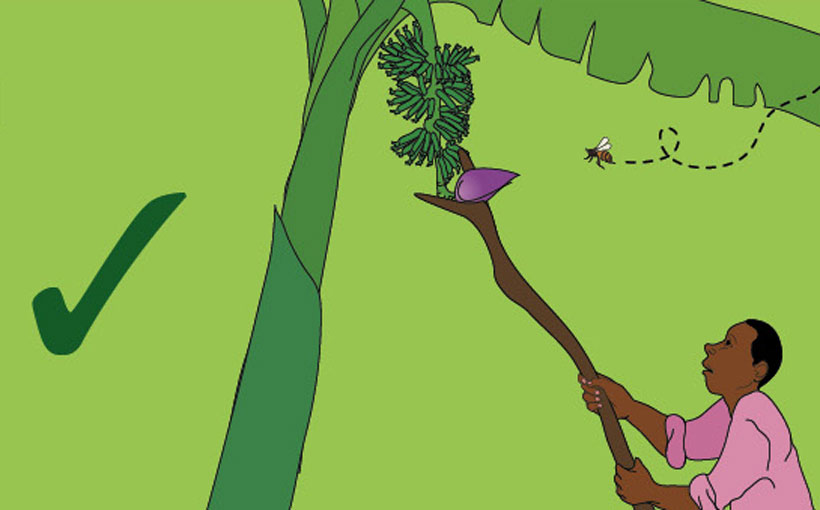The most popular fruit in the world, after the tomato, is the banana. It’s the most exported fruit globally, making up 75% of all tropical fruits exports. Technically it’s a herb, that reproduces when suckers spring up from the base. The suckers are genetically identical to the mother plant, and that’s its weakness: its lack of genetic diversity makes it susceptible to disease.
Banana Bacterial Wilt
Banana Bacterial (or Xanthamonas) Wilt was first identified in Uganda around 2001, and by 2004 there was an estimated 40% loss in yield across Central Uganda, with some areas facing losses of 90%.
Traditionally, farmers would chop down sick banana plants, but it was soon evident that instead of isolating the disease, the opposite was happening. By pruning their trees, farmers were were transmitting the disease from sick plants to healthy ones with their machetes.
To slow the spread, farmers need to understand what BBW is, how to recognise it in their fields, how it is transmitted, and how they can control it. The illustrations were created by Baingana Andrew and Sam Rich.



These posters were produced all across East Africa: in English and Kiswahili for Kenya; in English, Runyankore and Luganda for Uganda; in Swahili and French for Eastern Congo; in Kinyarwanda for Rwanda; and in Kirundi for Burundi.
Banana Bunchy Top Virus
First identified in Fiji in 1879, Banana Bunchy Top Virus is transmitted by aphids, prevents the tree from fruiting, and is well-known across Asia with occasional occurences in Africa. It is notoriously hard to eradicate, so any outbreaks need to be identified early and contained at source.
A new outbreak was discovered in a lush valley in Eastern Rwanda on the border with DR Congo in 2012. We designed materials to help farmers recognise the symptoms, understand how it was transmitted and the threat it presented, and advise them on what to do next. With FAO, the posters were produced in English, French, and English and distributed in Rwanda and Eastern Congo.

Banana Pests and Diseases
These projects were credited with reducing the spread of the disease, while highlighting the need for information on banana diseases. As a result we made this booklet on a range of banana diseases.

